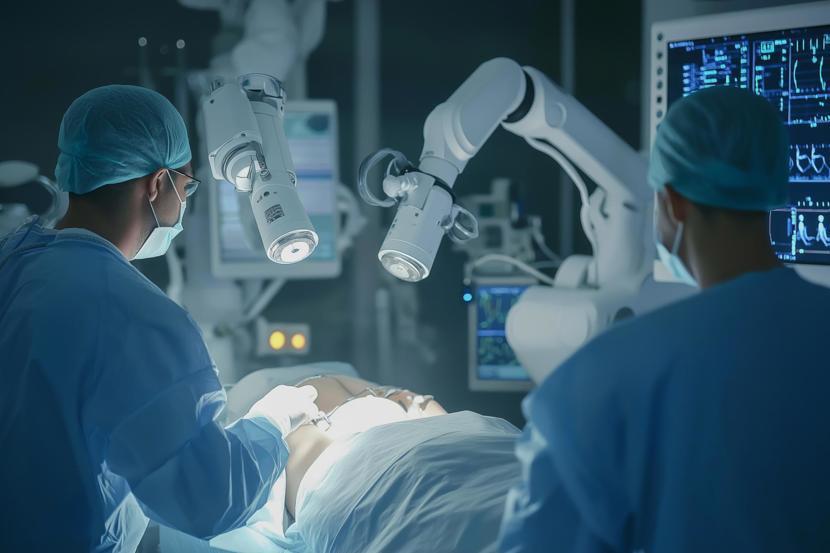The Role of High-Precision Instruments in Modern Medical Equipment

Dr. Saqlain Sarwar is a Dentist Practicing in Al Jalila Children's Hospital | Al Jaddaf - Al Jaddaf Dubai. Dr. Sarwar specializes in preventing, diagnosing, and treating diseases and conditions associated with the mouth and overall dental health. Dentists are trained to carry out such treatment as professional cleaning,... more
Healthcare has been evolving technologically over the years, with high-precision modern medical equipment playing a big role in revolutionizing the sector.
These instruments have a crucial role not only in diagnostics but also in streamlining all other medical procedures. This ensures accuracy, higher chances of getting better outcomes, and reduced patient recovery times.
This article dives into the role of high-precision instruments in modern healthcare. We will assess how these innovations have shaped the different medical procedures and their contribution to advancing patient care.
Understanding High-Precision Instruments
High-precision instruments are medical tools meticulously engineered to perform medical procedures, ranging from diagnostics and measurements to treatments and procedures with utmost accuracy.
These tools have become an integral part of modern medicine owing to their unparalleled ability to enhance the accuracy of medical procedures and minimize the need for invasive medical procedures.
Surgical robots, MRI and CT scans, 3D bioprinting machines, endoscopes, and abdominal ultrasound machines are some of these high-precision instruments. Others include blood analyzers, microscopes, genomic sequencers, and laser surgical systems.
Applications in Various Medical Fields
Medical technology has seen high-precision equipment become more indispensable across multiple fields. Here are some of the applications where these accurate instruments are being used:
1. Imaging & Diagnostics
Reliable diagnostic results remain the cornerstone of effective healthcare services. If a disease can be accurately diagnosed in time, it becomes easier for healthcare professionals to know what treatment approach to deploy. In that case, the prognosis is more likely to be favorable.
High-precision innovations, especially in the form of advanced imaging techniques, have made early disease detection easier than ever, increasing the chances of successful treatments. MRI and CT scans offer high-resolution visuals, improving disease detection accuracy.
Digital X-rays, 3D mammography, and AI-powered ultrasound machines are other notable innovations that have made disease diagnosis smooth and reliable by providing more precise imaging with reduced radiation exposure.
2. Laboratory & Research
The introduction of high-precision instruments in laboratories and research has made it easier to detect disease with unprecedented accuracy. Automated blood analyzers and gene sequencing machines, for instance, allow health professionals to diagnose illnesses with unparalleled precision and speed, making the conditions easier and less expensive to manage.
High-throughput screening tools have also played a vital role in drug research and development. Traditionally, it takes 10 to 15 years to develop a new drug. However, with the high-throughput screening tools, this duration has been reduced by approximately half.
Additionally, precision measurement devices such as the keysight oscilloscope are widely used in biomedical research to analyze electrical signals in medical devices, ensuring their reliability and accuracy in critical healthcare applications.
3. Patient Monitoring
Patient monitoring remains key to early disease detection, and high-precision instruments have come in to ensure accuracy in this area. Medical devices like continuous glucose monitors (CGMs), electrocardiograms (ECGs), and pulse oximeters are now used to measure essential aspects and provide real-time data to health professionals.
Some of these high-precision patient monitoring innovations are even coming in wearable designs. Perfect examples include smartwatches and biosensors, which are currently used to track essential elements like activity patterns, oxygen levels, and heart rate.
Through high-precision patient monitoring innovations, healthcare professionals can intervene early enough to avoid health complications and readmissions. In a recent study, it was discovered that remote patient monitoring (RPM) reduced 30-day readmissions for heart patients by 50%.
4. Surgical Procedures
High-precision instruments have also improved how surgical operations are done in healthcare facilities. Surgeons can now perform surgeries with greater accuracy and control, reducing recovery times and improving patient safety.
The advent of robotic-assisted surgery, for instance, has been a real game changer in the surgical field by allowing surgeons to carry out sophisticated surgical procedures with precision and minimal tissue cutting.
Some of the state-of-the-art robotic-assisted surgery (RAS) systems, like the Da Vinci Surgical System, offer impressive dexterity, allowing for smaller incisions, minimal tissue damage, and lesser blood loss.
In addition, robotic surgical systems have a much lower chance of postoperative infections. The International Nosocomial Infection Control Consortium reported about 9.06 hospital-acquired infections (HCAIs) per 1,000 ICU patient days. Mainly, these infections were attributed to more extended postoperative hospital stays, longer recovery times, additional surgical procedures, and other factors.
With robotic-assisted surgery systems minimizing the postoperative hospital stay and recovery times, patients are less likely to get exposed to microorganisms after they’ve been surgically operated, reducing the incidence of healthcare-associated infections.
Benefits of High-Precision Medical Instruments
As medical technology advances, high-precision instruments continue to redefine the standards of patient care.
Here are some of the benefits these instruments are bringing into the medical arena:
Improved Accuracy
Errors can be costly in medicine. High-precision instruments reduce the margin of errors in both medical diagnoses and treatment, ensuring better service quality and minimal risk of developing severe complications.
Minimally Invasive Procedures & Faster Recovery
High-precision instruments are replacing the traditional methods marked by highly invasive procedures. Currently, technologies like MRI scans, X-rays, robotic-assisted operations, CT scans, and others use smart technology to perform complex procedures with minimal tissue damage.
Enhanced Patient Safety & Reduced Human Error
As high-precision medical instruments become more ubiquitous in healthcare facilities, the risks that have long been associated with human error will be reduced, making treatment safer and more effective for patients.
Cost-Effectiveness & Long-Term Healthcare Efficiency
While these innovations require massive initial investment, they can reduce long-term healthcare costs. For instance, by promoting early disease detection, minor complications are less likely to snowball into severe health conditions, eliminating the massive costs associated with late-stage treatments.
Challenges and Future Trends
Despite all the benefits associated with high-precision medical devices, these instruments come with their challenges.
Some of the main drawbacks include:
- High Costs: These innovations are usually money-intensive to purchase and maintain, making them less likely to be available in some healthcare settings.
- Technological Integration: Technology is quickly changing, and the currently growing role of artificial intelligence (AI) and automation in the healthcare landscape places a heavy need on the importance of continuous adaptation and learning.
- Specialized Training: Besides their knowledge and experience in the field, medical professionals also need extensive training on how to use these precision instruments effectively.
In the future, we expect to witness more of AI-driven tests and diagnostics, nanotechnology in drug delivery, and personalized medicine, all promising to deliver even better medical accuracy, efficiency, and treatment outcomes.
Conclusion
High-precision instruments significantly affect modern medical practices, enabling safer, more effective, and efficient healthcare. As technology continues to advance, we expect these tools to play an even more significant role in shaping the future of medicine. Investing in precision medical technology and training will ensure better healthcare delivery and improved patient care worldwide.









